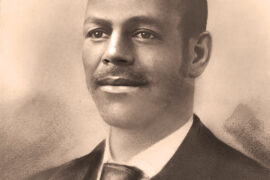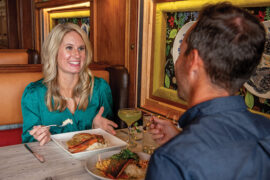By Matthew DeBord
HQ 130 | SUMMER 2025
Blind tasting. If you spend any time as a wine enthusiast, you’ll eventually encounter this term. Maybe you see it mentioned in a prominent wine magazine, when the editors describe how they objectively assess different bottlings. Or maybe you just hear friends who are also into wine say something about it. “How was your weekend?” “Great, I went to a really cool blind tasting.”
But what exactly does it mean? Well, it’s fairly simple. In order to eliminate any possibility of serious bias, people who evaluate wines professionally taste them without knowing what they are. That doesn’t mean the tasting process is completely random. When I was an editor at Wine Spectator magazine a number of years ago, I participated in weekly blind tastings. The process required that we gather a group of similar wines (red wines from the Rioja region of Spain, for example, or a whole bunch of Champagne), pop the corks, assign the wines numbers for that session and put them into brown paper bags.
Next, we would taste through the wines, make notes and score the wines from 0-100 points in a computer data-base, then pull the bags off to see how the candidates had performed. Given that the professional tasters had an idea of what they were tasting, and that we didn’t include any ringers, there were rarely any big surprises, such as a $10 wine outscoring a $100 wine. The fact that all scores were awarded “blind” meant that we didn’t reflexively favor famous or more expensive wines due to their labels and reputations.
If a wine that should have scored well unexpectedly scored badly, we would give the wine another shot at a later tasting. But if it was tasted twice with a consistent result, we stuck to our rating.
This whole thing was obviously pretty involved. We had several employees whose entire job was to coordinate tastings — opening the wines, setting up the flights and making sure the right numbers were on the bags. We also tasted thousands of wines every year.
Let’s say you want to do your own blind tasting with friends or family. What’s the best way to set it up?
First, go buy some brown paper lunch bags and a Sharpie. Then, decide on the wines. I recommend a flight of 12 whites and 12 reds, but if that’s too expensive, then go with six and six, the idea being to get a case discount for buying by the dozen. I prefer to make all the wines the same style: six Chardonnays and six Cabernet Sauvignons, for example. Keep the price spread somewhat compact: $10-50, or $50-100. For fun, consider throwing in one supercheap or very expensive wine for each flight.
Then, appoint a person to manage the tasting. This person will create a small “database” of the wines being tasted, pop the corks and organize the bags. For a limited tasting, I think a printed paper tasting sheet for each participant is a good idea, so that each person can take notes and score the wines. Buy a box of pens or pencils!
Next, make sure you have enough glasses — and, more importantly, buckets to spit in! Tasting wine entails a modest amount of drinking, and you could get a little tipsy by the end of it. Save the swallowing for after, and lay in some snacks, such as sliced meats, cheeses and some crackers. And make sure each taster has some water, both sparkling and still.
Finally, sit everyone down at a big table and get to work! Start with the whites, then move onto the reds. All the tasters need to do is keep track of the numbers on the bags and the numbers on their sheets.
Once all tasters have sampled each of the wines, making relatively small pours (about one ounce) so that the bottles don’t run dry, conclude the tasting and take off the bags. This can be the most fun part. Many times, I’ve witnessed the cheaper wines beating out the pricier ones, the big names falling to more mass-market bottlings. But I’ve also seen the tasting replicate the commercial hierarchy, with the “better” wines coming out on top.
When I was involved in professional tastings, there were typically only two or three of us in the room, so we often discussed each wine as we tasted it. This isn’t practical with a larger group, so I suggest you save this for the end, once the bags come off. No one should feel weird if they score the $10 wine high and the $50 wine low. There’s a chance that their palate simply responds more favorably to simpler and less expensive wines. To be honest, when I first learned to taste like a pro, I had to acquire the discipline of not being overly impressed by powerful, fruity wines. Gradually, I was less likely to fall for the crowd-pleasers.
Post tasting, have a nice big dinner and drink up all the wines. This will add yet another layer to the experience: you’ll discover which wines work best with food — and they aren’t always the most expensive! Then schedule your next blind tasting. Once you start, it’s hard to stop.





